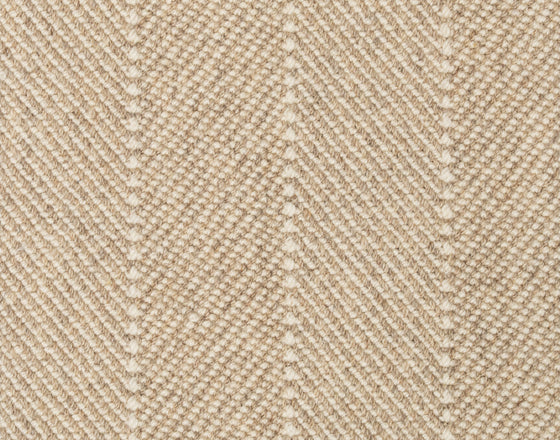
Custom vs. Stock Cabinets: Which Is Right for You?
When remodeling your kitchen, bathroom, or laundry room in Chicago, the cabinets you choose will define both the functionality and the style of your space. And if you're searching for high-quality cabinetry near North Lincoln Avenue, Home Carpet One is your trusted local source. But before you start picking wood finishes or browsing hardware, there’s a big decision to make: custom vs. stock cabinets. Which is the right fit for your home, your budget, and your timeline? Let’s break down the differences—plus the pros and cons—to help you choose the best cabinetry for your next renovation right here in the heart of Chicago. What Are Stock Cabinets? Stock cabinets in the kitchen with marble tile floors and backsplash Stock cabinets are pre-made in standard sizes and finishes. Because they’re mass-produced and ready to ship, they’re a popular choice for homeowners across Chicago neighborhoods who want an efficient, budget-friendly upgrade. You can add a personal touch by selecting contemporary marble tile flooring and walling. Key features: Common widths and heights, easy to install A limited selection of styles and finishes Quicker turnaround time Found in most home improvement stores or showrooms like ours on North Lincoln Avenue Best for: Chicago homeowners with standard-sized kitchens or baths who want a fast, affordable refresh. What Are Custom Cabinets? Custom-made cabinets in the bathroom decorated with wood-look porcelain tiles . Custom cabinets are built to your exact measurements, design preferences, and storage needs. Whether you live in a vintage walk-up in Lincoln Park or a modern condo in Lakeview, custom cabinetry is ideal for those tricky layouts and design visions that require something more tailored. Key features: Made-to-measure, with full creative control Choose your materials, finishes, hardware, and internal features Ideal for unique room layouts or premium design projects Longer lead time and higher investment Best for: Homeowners in North Side neighborhoods who want something personalized, long-lasting, and built to fit their space exactly. Custom vs. Stock: Key Factors for Chicago Homeowners A small, elegant kitchen with antique white custom-made cabinets and geometric marble backsplash tiles. 1. Budget Stock cabinets are generally much more affordable. That’s why they’re a go-to for many first-time renovators or property investors in Chicago’s diverse real estate market. Custom cabinets require a larger investment, but for homeowners in Ravenswood, Roscoe Village, or anywhere near North Lincoln Avenue looking for quality and customization, the payoff is worth it. Verdict:Stock cabinets are great for budget-conscious upgrades. Custom is best if you're making a long-term investment in your Chicagoland home. 2. Timeline Stock cabinets are ideal for quick-turn projects. If you're doing a kitchen flip in West Lakeview or updating a rental unit near DePaul, stock might be the most practical option. Custom cabinetry, however, involves a longer production period. It is something to factor in for larger renovations or new builds. Verdict:Need it fast? Stock is the way to go. Want it just right? Custom is worth the wait. 3. Cabinet Design Flexibility Cabinet style plays a huge role in the overall look of your home. At Home Carpet One’s showroom on North Lincoln Avenue, we showcase both stock and custom options so you can see the difference for yourself. Stock cabinets come in set styles and colors, while custom cabinets let you match your exact design goals—perfect if you're aiming for a sleek Chicago loft look or a cozy bungalow vibe. Verdict:Custom wins for design freedom. Stock is perfect when you find something you love among the preset options. 4. Space Fit and Efficiency Chicago homes often have unique layouts—especially older houses in neighborhoods like North Center or Lincoln Square. Stock cabinets may not always fit just right, leaving awkward gaps or requiring fillers. Custom cabinets are measured precisely to your space, maximizing storage and creating a seamless look even in oddly shaped rooms. Verdict:For historic or non-standard layouts common in North Chicago, custom cabinets provide a cleaner, more efficient fit. 5. Resale Value In Chicago’s competitive housing market, quality upgrades make a difference. Buyers appreciate well-crafted cabinetry—especially in kitchens and bathrooms. Custom cabinetry can boost resale appeal, particularly in high-value neighborhoods or newly renovated homes. But quality stock cabinets, professionally installed by your Home Carpet One team, can also make a strong impact. Verdict:Custom offers long-term design value; stock brings instant style at a smart price. What About Semi-Custom Cabinets? Semi-custom cabinets in a designer bathroom. If you’re looking for the sweet spot between price and personalization, semi-custom cabinets might be perfect for your Chicago home. They offer more flexibility than stock and more affordability than full custom. At our North Lincoln Avenue showroom, our team can walk you through semi-custom lines that blend both value and style. Schedule an appointment. So, Which Cabinet Should You Choose? It really comes down to your space, your goals, and your budget. Choose stock cabinets if: You're renovating on a budget You have a standard-sized kitchen or bathroom You need a fast and efficient installation Choose custom cabinets if: Your space has unique measurements or layout challenges You want complete design control You're investing in long-term quality and home value At Home Carpet One in North Lincoln Avenue, Chicago, we offer everything from elegant custom cabinetry to durable, budget-friendly stock solutions. Whether you're revamping a family kitchen in Uptown or renovating a bathroom in Andersonville, our experienced design team is here to help. Stop by our Chicago showroom to see samples, get expert guidance, and turn your renovation vision into reality. From cabinets and countertops to flooring and beyond, we’re proud to serve Chicago homeowners with quality products and personalized service. Visit Our Showroom!
























































